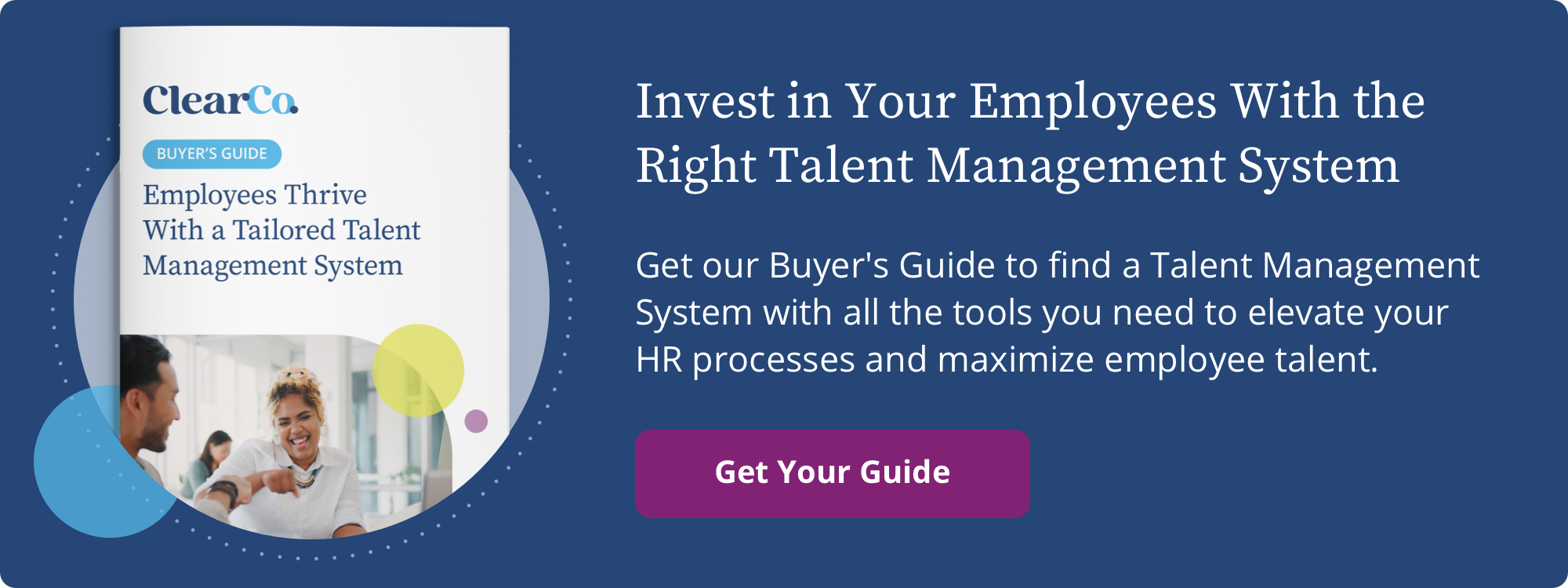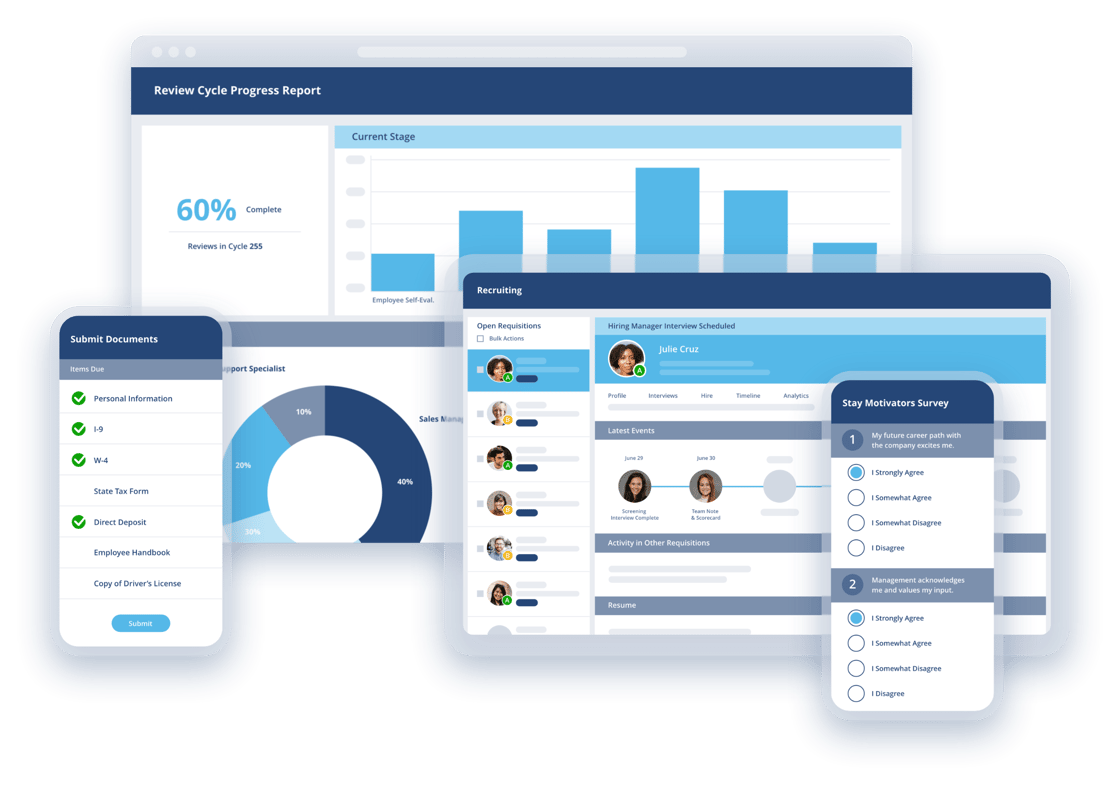This article on stack ranking and performance management was originally published in January 2015. All relevant statistics and copy have been updated as of September 2023.
In finding the best ways to maximize employee potential and company profits, managers use a wide breadth of systems, processes, and company-specific routines to motivate those falling behind and reward those performing well. Stack ranking is perhaps the most notorious of these systems, as its uses and pitfalls are talked about endlessly in the recruiting and manager world.
Below we dive deeper into the stack ranking system and the various benefits and disadvantages of utilizing this strategy.
@ClearCompany breaks down #StackRanking in their latest blog. See whether you should be using this #PerformanceManagement strategy:What is Stack Ranking?
Stack ranking utilizes bell curves to rate and rank employees based on their performance. Initially developed in the 1980s by the then-CEO of General Electric, Jack Welch, this approach to performance management enabled leaders to differentiate their high performers from their low performers. Welch’s view formed the well-known 15-75-10 mindset.
This strategy meant that employers expected 15% of employees to be performing at the top of their productivity curve, 10% to be underperforming in their roles, and 75%, or the general majority of employees, will fall somewhere between these two outliers. Your employees that fall within this 75% perform well in their roles but are not as ambitious and driven as your top performers.
Bonus Material: Make the most of your performance management strategies by following these 4 best practices.
General Electric first implemented this practice and quickly saw its net worth rise. By identifying their top performers and highlighting which team members were hurting company profits due to a lack of profitability, leaders could make informed decisions about retaining their talent and managing their employees. Several other companies such as Yahoo and Microsoft saw the benefits and advantages of utilizing a strategy like stack ranking. They soon adopted similar systems into their existing performance management strategies.
There are a few things to be mindful of before implementing stack ranking strategies in your organization. Below we dive into a few key benefits and disadvantages of using this method to manage your employee performance.
Advantages of Stack Ranking
Advantage #1 — Embraces a meritocracy culture.
A meritocracy culture is where advancement, bonuses, and promotions are distributed based on employee skill and merit. Essentially, employees who are the top performers and are consistently producing high-quality work are the ones who will qualify for and be considered first for career advancement opportunities. This helps to reduce bias in the workplace and clearly articulates what employees need to do to become high performers.
Advantage #2 — It can improve employee morale.
A stack ranking system is built on the idea of recognizing and celebrating employees who work hard and produce great results. Several studies have found that the more consistently a leader recognizes employees’ good work, the more engaged and satisfied they will be. Stack ranking allows HR leaders to celebrate the wins of their top performers while also encouraging their underperformers to improve their workplace performance.
Disadvantages of Stack Ranking
Disadvantage #1 — It can promote a negative workplace culture.
If your organization embraces stack ranking, you need to ensure you are not fostering a culture of hyper-competitiveness. When you dictate to your team that their individual performance impacts their ability to advance within your organization, they might be incentivized to act for their own benefit. Ensure you balance this mindset by creating a workplace where employees feel comfortable speaking honestly and transparently.
Is #StackedRanking worth it? @ClearCompany analyzes the impact of subjectively ranking employees based on their #performance:Disadvantage #2 — The process can trigger feelings of fear and shame.
With stack ranking, leaders are forced to place their employees along the bell curve. This means that only 10-15% of your employees can be classified as your highest performers, even if more people fall within this category. When your performance management strategy becomes more subjective rather than objective, employees can quickly become disengaged or feel anxious at work. These negative feelings can lead to employees being dissatisfied with their roles.
Potential Alternatives to Traditional Stack Ranking Strategies
Stack ranking has faced criticism for its potential drawbacks — it can create a competitive culture, rather than a collaborative one and may not accurately reflect an employee's overall contribution. Microsoft ended the practice after finding that no matter what, one in ten employees was receiving a terrible review.
As organizations strive for inclusive and effective performance evaluation systems, they’re turning to alternative strategies like these:
- 360-Degree and Peer Reviews: This performance review method involves gathering feedback from those surrounding an employee — peers, subordinates, supervisors, and sometimes even customers. This wide range of perspectives can provide a more comprehensive view of an employee's performance.
- Employee Self-Assessments: Encouraging employees to evaluate their own performance can foster personal growth and promote ownership and accountability. Combined with manager feedback, it can lead to more meaningful and constructive discussions.
- Continuous Performance Management: Instead of annual or semi-annual reviews, continuous performance management encourages frequent check-ins and feedback, leading to more timely adjustments and increased engagement. Managers regularly provide constructive feedback and coaching, helping employees improve their skills and achieve their career goals.
- Employee Performance Goals: Performance goals give employees specific, measurable results to work toward. Align individual and team goals with organizational objectives to encourage collaboration and a sense of shared purpose.
- Performance Development and Improvement Plans: Personalized performance development plans outline specific goals, milestones, and strengths to develop, tailored to each employee's needs and goals. Performance improvement plans focus on areas where individual employees’ skills must improve in order to be successful.
- Peer Recognition and Rewards: Peer-driven recognition programs enable employees to acknowledge and reward their colleagues for outstanding contributions. These programs boost morale, foster camaraderie, and promote a positive work culture.
- Agile Performance Management: Embracing an agile approach means adjusting performance expectations and feedback as needed in response to changing circumstances and priorities. This approach is fitting for adaptable and innovative workplaces.
- Holistic Performance Metrics: When your performance evaluation criteria include quantitative results as well as qualitative factors, like teamwork, adaptability, and innovation, you can get a more comprehensive view of an employee's value to the organization. That leads to reviews and feedback that are more balanced and fair.
Each of these alternatives has its own pros and cons, but they all emphasize communication, collaboration, and a more holistic view of performance. That promotes a culture where employees are treated fairly, feel a sense of belonging, and are empowered to do their best. Consider the unique needs and work culture of your company when choosing an evaluation method.
A More Flexible Approach to Performance Management
When it comes to performance management strategies, organizations need to pick and choose which aspects work best for their needs and culture. On its own, stack ranking opens the door to potential risks, but this doesn’t mean that a stack ranking strategy is destined to fail. Over the years, organizations have recognized the inherent risks associated with subjective performance management ranking. To retain their employees and keep them engaged and motivated, leaders need to find ways to create a supportive but challenging workplace that encourages professional growth.
For more than a decade, ClearCompany has been helping organizations to meet their hiring, engagement, and performance management goals. Our award-winning software solutions offer customization and easy implementation with your existing talent management strategy. With access to 360-degree peer feedback, goal and performance tracking tools, and mobile-friendly capabilities, our Performance Management system enables leaders to take charge of their performance review cycle and ensure they have access to the right data.
For more information, reach out to our team of experts and sign up for your free demo now!



